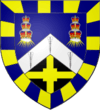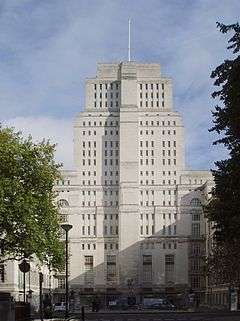Queen Mary University of London
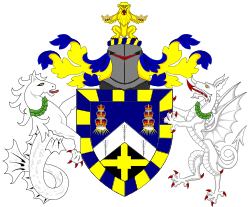 Coat of arms of Queen Mary University of London | ||||||||||||
| Motto | Latin: Coniunctis Viribus | |||||||||||
|---|---|---|---|---|---|---|---|---|---|---|---|---|
Motto in English | With United Powers | |||||||||||
| Type | Public research university | |||||||||||
| Established |
Four antecedent colleges: London Hospital Medical College (c. 1785) St Bartholomew's Hospital Medical College (c. 1843) Westfield College (c. 1882) East London College/Queen Mary College (c. 1887)[1][2][3] | |||||||||||
| Endowment | £34.3 million (as of 31 July 2017)[4] | |||||||||||
| Budget | £428.8 million (2016–17)[4] | |||||||||||
| Chancellor | Anne, Princess Royal | |||||||||||
| Principal | Colin Bailey | |||||||||||
Administrative staff | 4,500 | |||||||||||
| Students | 25,332 | |||||||||||
| Undergraduates | 18,081 | |||||||||||
| Postgraduates | 6,601 | |||||||||||
| Location |
London, E1 4NS, United Kingdom 51°31′23″N 0°02′25″W / 51.52306°N 0.04028°WCoordinates: 51°31′23″N 0°02′25″W / 51.52306°N 0.04028°W | |||||||||||
| Campus |
Mile End Whitechapel Charterhouse Square Lincoln's Inn Fields West Smithfield Paris Malta Piraeus, Greece[5] | |||||||||||
| Colours |
| |||||||||||
| Affiliations |
Alan Turing Institute ACU EUA GMEC LCACE LIDC Russell Group SEPnet SES UCL Partners Universities UK University of London | |||||||||||
| Website | University website | |||||||||||
 | ||||||||||||
Queen Mary University of London (QMUL) is a public research university in London, England, and a constituent college of the federal University of London. It dates back to the foundation of London Hospital Medical College in 1785. Queen Mary College, named after Mary of Teck, was admitted to the University of London in 1915 and in 1989 merged with Westfield College to form Queen Mary and Westfield College. In 1995 Queen Mary and Westfield College merged with St Bartholomew's Hospital Medical College and the London Hospital Medical College to form the School of Medicine and Dentistry.
Queen Mary's main campus is in the Mile End area of Tower Hamlets, with other campuses in Holborn, Smithfield and Whitechapel. In 2015/16 it had 17,140 students and 4,000 staff.[6] Queen Mary is organised into three faculties – the Faculty of Humanities and Social Sciences, the Faculty of Science and Engineering and Barts and The London School of Medicine and Dentistry – within which there are 21 academic departments and institutes.
Queen Mary is a member of the Russell Group of leading British research universities, the Association of Commonwealth Universities and Universities UK. Queen Mary is a major centre for medical teaching and research and is part of UCLPartners, the world's largest academic health science centre. It has a strategic partnership with the University of Warwick, including research collaboration and joint teaching of English, history and computer science undergraduates. Queen Mary also collaborated with Royal Holloway, University of London, to run programmes at the University of London Institute in Paris. However, from September 2016, Queen Mary took over the functions provided by Royal Holloway.[7] Queen Mary also collaborates with University of London International Programmes to offer its post graduate law and Global MBA program.[8][9] For 2016–17, Queen Mary had a turnover of £428.8 million, including £107.6 million from research grants and contracts.[4]
Times Higher Education ranks Queen Mary 48th in its 2018 ranking of European universities.[10] U.S. News and World Report ranks Queen Mary 116th overall in its 2018 ranking of world universities.[11] In Times Higher Education Best universities in the UK 2017, it has been ranked 15th.[12] Queen Mary is ranked in the top 5 universities in London in the Complete University Guide 2017 League Table.[13][14] Queen Mary School of Law was ranked 34th in the world by QS World University Rankings 2018.[15] Queen Mary's Schools of English and Drama have both been ranked in the top 35 in the world, with the School of History ranking in the global top 50 by QS World University Rankings.[16][17] There are eight Nobel Laureates amongst Queen Mary's alumni and current and former staff.[18]
History
St Bartholomew's Hospital Medical College and the London Hospital Medical College
The Medical College of the Royal London Hospital (now part of Barts and The London School of Medicine and Dentistry) was England’s first medical school when it opened in 1785.[19] In 1850, Elizabeth Blackwell became the first fully qualified female doctor in the UK, after training at St Bartholomew's Hospital.[19]
People's Palace
The predecessor to Queen Mary College was founded in the mid Victorian era as a People's Palace when growing awareness of conditions in London's East End led to drives to provide facilities for local inhabitants, popularised in the 1882 novel All Sorts of Conditions of Men – An Impossible Story by Walter Besant, which told of how a rich and clever couple from Mayfair went to the East End to build a "Palace of Delight, with concert halls, reading rooms, picture galleries, art and designing schools."[20]:15-17 Although not directly responsible for the conception of the People's Palace, the novel did much to popularise it.
The trustees of the Beaumont Trust, administering funds left by Barber Beaumont, purchased the site of the former Bancroft's School from the Drapers' Company. On 20 May 1885 the Drapers' Court of Assistants resolved to grant £20,000 "for the provision of the technical schools of the People's Palace."[20]:21 The foundation stone was laid on 28 June 1886 and on 14 May 1887 Queen Victoria opened the palace's Queen's Hall as well as laying the foundation stone for the technical schools in the palace's east wing.
The technical schools were opened on 5 October 1888, with the entire palace completed by 1892. However others saw the technical schools as one day becoming a technical university for the East End.[20]:37 In 1892 the Drapers' Company provided £7,000 a year for ten years to guarantee the educational side income.
East London College
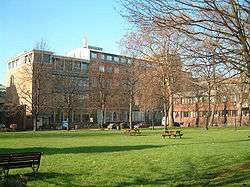
In 1895 John Leigh Smeathman Hatton, Director of Evening Classes (1892–1896; later Director of Studies 1896–1908 and Principal 1908–1933), proposed introducing a course of study leading to the Bachelor of Science degree of the University of London. By the start of the 20th century the first degrees were awarded and Hatton, along with several other Professors, were recognised as Teachers of the University of London. In 1906 an application for Parliamentary funds "for the aid of Educational Institutions engaged in work of a University nature", led to the College being admitted on an initial three-year trial basis as a School of the University of London on 15 May 1907 as East London College.
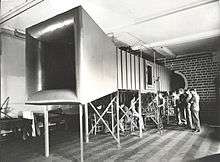
Teaching of aeronautical engineering began in 1907 which led to the first UK aeronautical engineering department being established in 1909 which boasted a ground-breaking wind tunnel. Thus creating the oldest Aeronautical Programme in the World.[21]
In 1910 the College's status in the University of London was extended for a further five years, with unlimited membership achieved in May 1915. During this period the organisation of the governors of the People's Palace was rearranged, creating the separate People's Palace Committee and East London College Committee, both under the Palace Governors, as a sign of the growing separation of the two concepts within a single complex.[20]:39–48
During the First World War the College admitted students from the London Hospital Medical College who were preparing for the preliminary medical examination, the first step in a long process that would eventually bring the two institutions together. After the war, the College grew, albeit constrained by the rest of the People's Palace to the west and a burial ground immediately to the east. In 1920 it obtained both the Palace's Rotunda (now the Octagon) and rooms under the winter gardens at the west of the palace, which became chemical laboratories. The College's status was also unique, being the only School of the University of London that was subject to both the Charity Commissioners and the Board of Education.
In April 1929 the College Council decided it would take the steps towards applying to the Privy Council for a Royal Charter, but on the advice of the Drapers' Company first devised a scheme for development and expansion, which recommended amongst other things to re-amalgamate the People's Palace and the College, with guaranteed provision of the Queen's Hall for recreational purposes, offering at least freedom of governance if not in space.[20]:49–57
Queen Mary College
In the early hours of 25 February 1931 a fire destroyed the Queen's Hall, though both the College and the winter gardens escaped. In the coming days discussions on reconstruction led to the proposal that the entire site be transferred to the College which would then apply for a Charter alone. The Drapers' Company obtained St Helen's Terrace, a row of six houses neighbouring the site, and in July 1931 it was agreed to give these over to the People's Palace for a new site adjacent to the old, which would now become entirely the domain of the College. Separation was now achieved. The Charter was now pursued, but the Academic Board asked for a name change, feeling that "east London" carried unfortunate associations that would hinder the College and its graduates. With the initial proposed name, "Queen's College", having already been taken by The Queen's College, Oxford and "Victoria College" felt to be unoriginal, "Queen Mary College" was settled on. The Charter of Incorporation was presented on 12 December 1934 by Queen Mary herself.[20]:57–62
Under the Charter
.jpg)
During the Second World War the College was evacuated to Cambridge, where it shared with King's College. After the war the College returned to London, facing many of the same problems but with prospects for westward expansion.[20]:75–85 The East End had suffered considerable bomb damage (although the College itself had incurred little) and consequently several areas of land near to the College site now became vacant. New buildings for physics, engineering, biology and chemistry were built on the new sites, whilst the arts took over the space vacated in the original building, now renamed the Queens' Building.
Limited accommodation resulted in the acquisition of further land in South Woodford (now directly connected to Mile End tube station by means of the Central line's eastward extension), upon which tower blocks were established. The College also obtained the Co-operative Wholesale Society's clothing factory on the Mile End Road which was converted into a building for the Faculty of Laws (and some other teaching), as well as the former headquarters of Spratt's Patent Ltd[22] (operators of the "largest dog biscuit factory in the world" – see Spratt's Complex) at 41–47 Bow Road, which was converted into a building for the Faculty of Economics founded by Maurice Peston, Baron Peston. Both faculties were physically separated from what was now a campus to the west.[20]:86–102
From the mid-1960s until the mid-1980s the College proposed to link with the London Hospital Medical College and St Bartholomew's Hospital Medical College with a joint facility in Mile End. A further link with both The London and St. Bartholomew's was made in 1974 when an anonymous donor provided for the establishment of a further hall of residence in Woodford, to be divided equally between Queen Mary College students and the two medical colleges.[20]:103–117
At the start of the 1980s changing demographics and finances led to a reorganisation of the University of London. At Queen Mary some subjects, such as Russian and Classics were discontinued, whilst the College became one of five in the University with a concentration of laboratory sciences, including the transfer of science departments from Westfield College, Chelsea College, Queen Elizabeth College and Bedford College.[20]:117–130
1989 to 2010
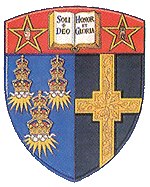
In 1989 Queen Mary College (informally known as QMC) merged with Westfield College to form Queen Mary & Westfield College (often abbreviated to QMW). Over subsequent years, activities were concentrated on the Queen Mary site, with the Westfield site eventually sold.
In 1990, the London Hospital was renamed the Royal London Hospital, after marking its 250th year, and a reorganisation of medical education within the University of London resulted in most of the freestanding medical schools being merged with existing large colleges to form multi-faculty institutions. In 1995 the London Hospital Medical College and St Bartholomew's Hospital Medical College merged into Queen Mary & Westfield College to form the entity now named Barts and The London School of Medicine and Dentistry.[23]
In 2000 the college changed its name for general public use to Queen Mary, University of London; in 2013, the college legally changed its name to Queen Mary University of London. The VISTA telescope is a 4-metre class wide-field telescope at the Paranal Observatory in Chile that was conceived and developed by a consortium of UK universities led by Queen Mary University, costing approximately £36m.[24]
The Westfield Student Village opened in 2004 on the Mile End Campus, bringing over 2,000 rooms to students and a huge array of facilities, restaurants, and cafes.[23][25]
The Blizard Building, home to the Medical School's Institute of Cell and Molecular Science opened at the Whitechapel campus in 2005. The award-winning building was designed by Will Alsop, and is named after William Blizard, an English surgeon and founder of the London Hospital Medical College in 1785.[26][27]
The year 2006 saw the refurbishment of The Octagon, the original library of the People's Palace dating back to 1888.[28]
In 2007 parts of the School of Law – postgraduate facilities and the Centre for Commercial Law Studies – moved to premises in Lincoln's Inn Fields in central London. The Women at Queen Mary Exhibition was staged in the Octagon, marking 125 years of Westfield College and 120 years of Queen Mary College.[23]
In September 2009, the world's first science education centre located within a working research laboratory opened at the Blizard Institute of Cell and Molecular Science, hoping to inspire children with school tours and interactive games and puzzles.[29]
2010 to present
Queen Mary became one of the few university-level institutions to implement a requirement of the A* grade at A-Level after its introduction in 2010 on some of their most popular courses, such as Engineering, Law, and Medicine.[30][31]
Following on from the 2010 UK student protests, Queen Mary set fees of £9,000 per year for September 2012 entry, while also offering bursaries and scholarships.[32]
On 12 March 2012 it was announced that Queen Mary would be joining the Russell Group in August 2012.[33][34] Later in March, Queen Mary and the University of Warwick announced the creation of a strategic partnership, including research collaboration, joint teaching of English, history and computer science undergraduates, and the creation of eight joint post-doctoral research fellowships.[35][36]
In January 2013, Queen Mary established the world's first professorial chair in animal replacement science.[37]
From 2014, Queen Mary began awarding its own degrees, rather than those of the University of London.[38]
Campus
The main Mile End campus contains the Faculty of Humanities and Social Sciences, the Faculty of Science and Engineering, the Queens' Building/People's Palace/Octagon, the main college library, the student union, Draper's bar and club, several restaurants, a number of halls of residences and a gym. The educational and research sites of the Arts Research Centre, Computer Science, the large Engineering building, G.E. Fogg Building, Francis Bancroft Building, G. O. Jones Building, Joseph Priestley Building, Lock-keeper's Graduate Centre, and the Mathematical Science Building, are all located within the Mile End campus.[39][40]
The Whitechapel campus encompasses Barts and The London School of Medicine and Dentistry, the Whitechapel Medical Library, the award-winning Blizard Institute of Cell and Molecular Science, and the Royal London Hospital.
The West Smithfield campus of Barts and The London School of Medicine and Dentistry, the West Smithfield Medical Library, the Wolfson Institute of Preventive Medicine, the John Vane Science Centre, the Heart Centre and St Bartholomew's Hospital are based in Smithfield.[41]
The Centre for Commercial Law Studies and LLM teaching and postgraduate law research activities are based in Lincoln's Inn Fields in Holborn.[41]
The Malta campus, situated on the island of Gozo, is part of Barts and the London School of Medicine and Dentistry. Students taught at the Malta campus are offered the same curriculum as taught at the Barts medical school in London, for the MBBS Medicine and Medicine Foundation programmes.[42]
Harold Pinter Drama Studio
The Harold Pinter Drama Studio is the main teaching and performance space of the students and staff of the Department of Drama. On 26 April 2005, Harold Pinter, who was to win the Nobel Prize in Literature later that year, gave a public reading and was interviewed by his official authorised biographer, Michael Billington, in the studio named for Pinter and located as part of the Faculty of Arts (Department of Drama, School of English and Drama) in the Mile End campus,[43][44] to celebrate its refurbishment.[45]
Organisation and administration
Queen Mary and Westfield College was established by Act of Parliament and the granting of a Royal charter in 1989, following the merger of Queen Mary College (incorporated by charter in 1934) and Westfield College (incorporated in 1933).[46] The Charter has subsequently been revised three times: in 1995 (as a result of the merger of the College with the Barts and the London School of Medicine and Dentistry); in 2008 (as a result of the Privy Council awarding the College Degree Awarding Powers; and in July 2010 (following a governance review).[46]
Schools, faculties and departments
There are three faculties and one cross-faculty multidisciplinary initiative:
- Humanities and Social Sciences
- Medicine and Dentistry
- Science and Engineering
- Life Sciences Initiative
The three faculties are split further into independent schools, institutes, and research centres:[47][48]
- Faculty of Humanities and Social Sciences
- School of Business and Management
- School of Economics and Finance
- School of English and Drama
- Department of English
- Department of Drama
- Global Shakespeare (in partnership with the University of Warwick)
- School of Geography
- Centre for Aquatic and Terrestrial Environments
- School of History
- School of Languages, Linguistics and Film
- Comparative Literature
- Film Studies
- French
- German
- Iberian and Latin American Studies
- Language Centre
- Linguistics
- Russian
- School of Law
- Centre for Commercial Law Studies
- Department of Law
- School of Politics and International Relations
- Faculty of Medicine and Dentistry
- Barts and The London School of Medicine and Dentistry
- Barts Cancer Institute
- Blizard Institute
- Institute of Dentistry
- Institute of Health Sciences Education
- William Harvey Research Institute
- Wolfson Institute of Preventive Medicine
- Barts and The London School of Medicine and Dentistry
- Faculty of Science and Engineering
- School of Biological and Chemical Sciences
- School of Electronic Engineering and Computer Science
- School of Engineering and Materials Science
- Institute of Bioengineering
- Materials Research Institute
- School of Mathematical Sciences
- School of Physics and Astronomy
- Life Sciences Initiative
- Centre for Computational Biology
- Centre for Genomic Health
- Centre for Mind in Society
- Institute of Bioengineering
- Collaborative research centres
- Centre for Aquatic and Terrestrial Environments (collaboration between the School of Biological & Chemical Sciences and the Department of Geography)
- Centre for Inflammation and Therapeutic Innovation
- Centre for Intelligent Sensing
- Centre for Mind in Society (collaboration between the schools of Electronic Engineering and Computer Science, Languages Linguistics and Film, Biological and Chemical Sciences, Economics and Finance, and Geography)
- Institute of Bioengineering (collaboration between the faculties of Science & Engineering and Medicine & Dentistry)
- Materials Research Institute (collaboration between the schools of Engineering and Materials, Physics and Astronomy, Biological and Chemical Sciences, and the Institute of Dentistry)
Central administration
Queen Mary is an 'exempt charity' under the Charities Act 1993. The Higher Education Funding Council for England has been Queen Mary's principal regulator since June 2010.[46]
Finances
In the financial year ended 31 July 2011, Queen Mary had a total income (including share of joint ventures) of £297.1 million (2009/10 – £289.82 million) and total expenditure of £295.35 million (2009/10 – £291.56 million).[46] Key sources of income included £100.02 million from funding body grants (2009/10 – £103.97 million), £82.8 million from tuition fees and education contracts (2009/10 – £76.22 million), £73.66 million from research grants and contracts (2009/10 – £68.47 million) and £1.17 million from endowment and investment income (2008/09 – £1.48 million).[46] During the 2010/11 financial year Queen Mary had a capital expenditure of £42.53 million (2009/10 – £45.61 million).[46]
At year end Queen Mary had endowments of £33.59 million (2009/10 – £29.95 million) and total net assets of £300.79 million (2009/10 – £291.38 million).[46]
Academic profile
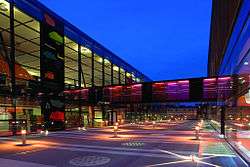
Queen Mary has around 3,000 staff, who teach and research across a wide range of subjects in the Humanities, Social Sciences and Laws, Medicine and Dentistry and Science and Engineering. Almost 17,000 students study at the 21 academic schools and institutes, with just over 30 percent coming from overseas and represent 130 different countries.[40] Queen Mary awarded over £2 million in studentships to prospective postgraduate students for the 2011/12 academic year.[41][49]
Research
It was ranked joint 9th in the UK amongst multi-faculty institutions for the quality (GPA) of its research[50] and 20th for its Research Power in the 2014 Research Excellence Framework.[51] In the UK Research Assessment Exercise results published in December 2008, Queen Mary was placed 11th according to an analysis by The Guardian newspaper[52] and 13th according to The Times Higher Education Supplement,[53] out of the 132 institutions submitted for the exercise. The Times Higher commented "the biggest star among the research-intensive institutions was Queen Mary, University of London, which went from 48th in 2001 to 13th in the 2008 Times Higher Education table, up 35 places."[54]
The growth and strength of research at the College was rewarded with an invitation to join the Russell Group of research-intensive universities in the UK in 2012.[55]
Libraries
Queen Mary's main library is located on the Mile End campus where most subjects are represented. It also has two medical libraries in Whitechapel and West Smithfield. Usual opening hours are 8 am to midnight. Since September 2017, the Mile End Library has been open 24 hours a day, 7 days a week during term time (including bank holidays).[56]
As members of a college of the University of London, students at Queen Mary have access to Senate House Library, shared by other colleges such as King's College London and University College London, in addition to library access throughout most of the individual University of London colleges, subject to approval at the given University.
Partnerships
Beijing University of Posts and Telecommunications
Queen Mary offers a joint degree programme with Beijing University of Posts and Telecommunications, one of China's top engineering universities. This was the first of its kind to be approved by the PRC Ministry of Education: it is taught 50% by each institution; in English; in Beijing; by staff who fly out from Queen Mary to teach its part of the programme; and the students receive two degrees, one from each university. The programmes are in Telecommunications and Management and Ecommerce Engineering and Law. Almost 2,000 students are studying on these programmes in 2009 and the first cohort graduated in the Summer of 2008.[57] The joint programmes have been praised by the UK Quality Assurance Agency; the PRC Ministry of Education; and the UK Institution of Engineering and Technology.[58]
University of London Institute in Paris
Queen Mary collaborated with Royal Holloway, University of London, to help run programmes at the University of London Institute in Paris (ULIP) which is a central academic body of the University of London located in Paris, France, enabling undergraduate and graduate students to study University of London ratified French Studies degrees in France.[59] From September 2016, Queen Mary took over the functions provided by Royal Holloway and all students are now considered registered students of Queen Mary.[7]
University of London International Programmes
Queen Mary collaborates with University of London International Programmes to offer its post graduate law and Global MBA program.[8][9]
UCL Partners
Queen Mary is a founding partner in UCL Partners, an academic health science centre located in London. Queen Mary joined UCL Partners in 2011, bringing the benefit of its expertise in areas such as cancer, cardiovascular disease, trauma, stroke and human genomics, as well as experience of reducing health inequalities. The other founding partners of UCL Partners are: Barts Health NHS Trust, Great Ormond Street Hospital for Children NHS Trust, Moorfields Eye Hospital NHS Foundation Trust, Royal Free London NHS Foundation Trust, University College London (UCL) and University College London Hospitals NHS Foundation Trust.
Admissions
| 2017 | 2016 | 2015 | 2014 | 2013 | |
|---|---|---|---|---|---|
| Applications[60] | 29,885 | 31,825 | 34,100 | 31,870 | 27,785 |
| Offer Rate (%)[61] | 81.6 | 76.9 | 75.0 | 74.4 | 74.3 |
| Enrols[62] | 4,665 | 4,965 | 4,580 | 4,005 | 3,880 |
| Yield (%) | 19.1 | 20.3 | 17.9 | 16.9 | 18.8 |
| Applicant/Enrolled Ratio | 6.41 | 6.41 | 7.45 | 7.96 | 7.16 |
| Average Entry Tariff[63] | n/a | 148 | 393 | 404 | 408 |
In terms of average UCAS points of entrants, Queen Mary ranked 32nd in Britain in 2014.[64] The university gives offers of admission to 75.0% of its applicants, the 12th lowest amongst the Russell Group.[65]
According to the 2017 Times and Sunday Times Good University Guide, approximately 12% of Queen Mary's undergraduates come from independent schools.[66] In the 2016–17 academic year, the university had a domicile breakdown of 68:10:22 of UK:EU:non-EU students respectively with a female to male ratio of 54:46.[67]
Rankings and reputation
Global rankings | ||
| ARWU[68] (2018) | 151–200 | |
|---|---|---|
| CWTS Leiden[69] (2018) | 51 | |
| QS[70] (2019) | 119 | |
| THE[71] (2019) | 130 | |
| Complete[63] (2019) |
38 | |
| The Guardian[72] (2019) |
83 | |
| Times / Sunday Times[73] (2019) |
46= | |
British Government assessment | ||
| Teaching Excellence Framework[74] | Silver | |
World
Queen Mary ranked 98th in the world in the 2014/15 QS World University Rankings. In 2016, it ranks 123rd.[75] Queen Mary ranked 98th in the world in the 2015/16 Times Higher Education World University Rankings. The Times Higher Education World University Rankings 2017 ranks Queen Mary equal 113th in the world, and equal 71st for Arts & humanities.[76] The university was ranked 52nd in the world in the CWTS Leiden Ranking in 2014. Academic Ranking of World Universities ranks Queen Mary between 151–200 in the world.[77] The university ranks 50th in the world in the CWTS Leiden Ranking 2016.[78][79] The 2017 U.S. News & World Report ranks Queen Mary 128th in the world.[80]
Europe
Queen Mary ranks 11th in Europe in the CWTS Leiden Ranking 2016.[78] The university ranks 47th in the U.S. News & World Report Best Global Universities in Europe.[81] Times Higher Education has ranked Queen Mary equal 46th in a ranking of European universities.[10]
Subject
Queen Mary ranks 69th in the U.S. News & World Report Best Global Universities for Molecular Biology and Genetics, and 70th in the Best Global Universities for Clinical Medicine.[81] Academic Ranking of World Universities 2016 ranks the university between 76-100 in the Ranking of World Universities in Life and Agriculture Sciences, and in Clinical Medicine and Pharmacy.[81] The 2018 Times Higher Education World University Rankings ranks Queen Mary between 101-125 in the world for Computer Science.[77]
Queen Mary Law School was ranked the 37th best law school in the world by Times Higher Education in 2018.[82]
National
Queen Mary ranks 8th in the UK in the CWTS Leiden Ranking 2016.[78] Queen Mary ranks 13th in the U.S. News & World Report Best Global Universities in the United Kingdom, and 5th in London.[81] In Times Higher Education Best universities in the UK 2017, it has been ranked 15th.[12]
The Guardian in 2014/2015 ranked Queen Mary the best law school in London, 3rd in the UK.[83] The Guardian ranks Queen Mary in the University league tables 2017 1st for Media & Film Studies, 2nd for Medicine in the UK and 1st in London for Medicine, 3rd in the UK for Dentistry and 1st in London for Dentistry, 9th for History in the UK and 3rd for History in London, 5th for Law in the UK and 3rd in London for Law.[84] The Complete University Guide 2017 ranked Queen Mary 5th best university in London and 3rd in the UK for Dentistry. The Complete University Guide 2018 ranks Queen Mary 5th in London overall; 1st in the UK and London for Dentistry, 1st in London and 4th in the UK for Medicine; 1st in London for Drama, Dance & Cinematics and German, 2nd in London for Aeronautical & Manufacturing Engineering, Linguistics, Materials Technology and Russian & East European Languages, 3rd in London for Accounting & Finance, Communication & Media Studies, Economics and English, 4th in London for Chemistry, Computer Science, Electrical & Electronic Engineering, French, Geography & Environmental Science, History, Iberian Languages, Law, Mechanical Engineering, Physics & Astronomy and Psychology, 5th in London for Biological Sciences, Mathematics and Politics, 7th in London for Business & Management Studies. For Research Quality The Complete University Guide ranks Queen Mary 8th in the UK, and 5th in London.[85]
The 2014 Research Excellence Framework ranked Queen Mary equal 9th with the University of Edinburgh and University of Bristol.[86]
The NUS-supported National Student Survey of 2011 ranked Materials at Queen Mary 1st in the UK, with Aerospace Engineering ranked 2nd and Mechanical Engineering 5th, with the entire School of Engineering and Materials Sciences ranked 1st in London. Overall, Queen Mary achieved student satisfaction of 88% to rank equal 2nd in London with UCL, and ahead of King's College London, LSE and Imperial College.[87] Queen Mary students ranked the university as the number one university in London for overall satisfaction in the National Student Survey 2015.
Queen Mary students feature in the top 10 in the UK for graduate starting salaries, according to The Times and Sunday Times University League Table 2016.[88]
Student life
Queen Mary Students' Union
The Queen Mary Students' Union (QMSU) unites the various clubs and societies of Queen Mary. The union is based at the recently refurbished Students' Hub. The elected representatives within the union are made up of a president and three vice-presidents. The union mascot is a leopard called Mary.
SU facilities and publications
- Qmotion (Gym/Fitness Centre)
- Drapers Bar
- Ground
- The Learning Cafe
- Infusion Shop
- The Print (newspaper)
- CUB (magazine)
- Quest (radio)
- Queen Mary Theatre Company
- QMTV (television)
- Students' Union Hub
The Students' Union Hub replaces the previous office called the Blomley Centre. It is named after a former President and VP Education, Laura Blomeley, who completed her term in office with terminal cancer. In remembrance of her commitment to QMSU, two key rooms in the new Students' Union Hub have been named after her.
Queen Mary students are also permitted to use the facilities at Student Central, the former University of London Union, located a 15-minute tube ride away in Bloomsbury.
Merger Cup
QM and BL sports clubs compete every year in the Merger Cup where many of the sports teams compete against each other. QM claimed the cup in 2010 but lost it in the following year to BL (2011). In 2012, QM claimed a narrow victory over BL, being helped with all five football teams defeating their medical school counterparts. Sporting fixtures include badminton, basketball, football, hockey, netball, rugby, squash, swimming, tennis and rowing.
Student housing
Many QMUL students are accommodated in the college's own halls of residence or other accommodation; QMUL students are also eligible to apply for places in the University of London intercollegiate halls of residence, such as Connaught Hall.
Most students in college or university accommodation are first-year undergraduates or international students. The majority of second and third-year students and postgraduates find their own accommodation in the private sector.[89]
Undergraduate
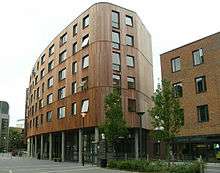
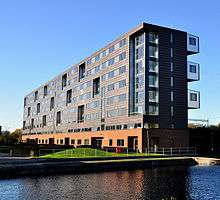
The College's Westfield Student Village, situated in the north-east corner of the Mile End Campus, has en-suite, self-catering housing for 1,195 students, staff and academic visitors in six contemporary buildings. A shop, laundrette, café bar, 200-seat restaurant and central reception (staffed 24 hours a day), and a communal area situated adjacent to the Regents canal, form part of the Village development. Rooms are arranged in flats and maisonettes housing between four and eleven students.
Undergraduate student housing at Queen Mary includes:
- Albert Stern House – Located next to Ifor Evans at the western end of the main Queen Mary campus.
- Beaumont Court – A four-storey building providing housing for 167 first year, associate and foundation students in maisonettes and flats. A convenience store is located on the ground floor. Located opposite Sir France House and adjacent to Creed Court.
- Sir Christopher France House – Situated on the bank of the Regents canal, flats in this building have been built to a higher specification than the rest of the village development, being larger in size, with full en-suite facilities including a bath and access to the College's internal phone network.
- Creed Court – A four-storey building providing housing for 124 postgraduate students in 10 maisonettes and 12 flats. Located opposite Sir France House and adjacent to Beaumont Court.
- Ifor Evans – Located at the western end of the campus.
- Lindop House – A residential development situated directly opposite the Queens' Building. The seven-storey residence, provides on-campus housing for 74 first year undergraduate, mostly medics, and foundation students in single rooms in 11 six-person flats and 2 four-person flats.
- Maurice Court – A four-storey building containing 12 maisonettes and 18 flats for up to 173 first year students. Located at the rear of Creed and Beaumont Courts and very close to Mile End Hospital.
- Maynard & Varey Houses – Two identical five-storey buildings, housing 200 first year undergraduate, associate and foundation students in single study bedrooms with lift access to all floors. Situated in Westfield Way at the eastern end of the Mile End campus directly opposite the College's Chemistry and IT Resource Centre.
- Pooley House – An eight-storey building located at the far end of the campus, providing housing for 378 first year, associate and foundation students in 48 flats. The largest building in the village development, it has three main entrances with lift access to all floors.
- Richard Feilden House – A six-storey building providing housing for 200 first year, associate and foundation students. The Curve, a 200-seat restaurant, launderette and university offices are situated on the ground floor. Opened in 2007, it is the newest dwelling in the Village and is situated opposite the Joseph Priestley Building.
Postgraduate
Postgraduate student housing at Queen Mary includes:
- Chapman, Chesney and Selincourt – Four residences situated in Westfield Way, at the eastern end of the Mile End campus adjacent to the Regents Canal. They provide 94 single en-suite rooms for final year undergraduate and new postgraduate students and are split into seventeen five-six bedrooms flats and one three bedroom flat.
- Dawson Hall – Located only yards from Barbican tube station in the City of London and set around lawns and trees on the College's Charterhouse campus, close to St Bartholomew's Hospital. This seven-storey residence with lift access to the first six floors provides single rooms for 207 medical and dental students and medical based postgraduates.
- Floyer House – Houses 145 medical and dental students and medical based postgraduates, located close to the London Hospital and Dental Institute at the College's Whitechapel campus.
- Hatton House – Situated in Westfield Way at the eastern end of the Mile End campus. A three-storey residence consisting of 34 single study bedrooms housing postgraduates with two rooms specifically designed for wheelchair disabled students. Rooms are furnished and have full en-suite facilities.
- Stocks Court – Situated just off the Mile End Road, providing housing for 125 postgraduate students. This four-storey residence is less than five minutes walk from the College's main campus at Mile End and is under a minutes' walk from Stepney Green tube station.
Notable people
Notable staff
 Sir Richard Owen, British biologist, comparative anatomist and paleontologist
Sir Richard Owen, British biologist, comparative anatomist and paleontologist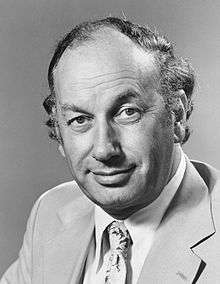 Sir John Vane, British pharmacologist, awarded the Nobel Prize in Physiology or Medicine in 1982
Sir John Vane, British pharmacologist, awarded the Nobel Prize in Physiology or Medicine in 1982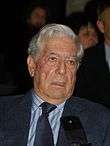 Mario Vargas Llosa, Peruvian writer, politician, and recipient of the 2010 Nobel Prize in Literature
Mario Vargas Llosa, Peruvian writer, politician, and recipient of the 2010 Nobel Prize in Literature
Notable current and former staff of Queen Mary include:
- John Abernethy – British surgeon, lecturer of St. Bartholomew's Hospital; founder of the Medical College of St Bartholomew’s Hospital[90]
- Edgar Andrews – British physicist and engineer (founded the Department of Materials at Queen Mary in 1967)
- Keith Ansell-Pearson – British philosopher[91]
- W. Ross Ashby – British psychiatrist and pioneer in cybernetics, the study of complex systems
- Rosemary A. Bailey – British mathematician
- Tim Bale – British political scientist
- Ted Bastin – British physicist and mathematician
- Sir Christopher Bayly – British historian[92]
- William Bonfield – British material scientist, and Emeritus Professor of Medical Materials in the University of Cambridge
- Donald Bradley – British chemist[93]
- Peter Cameron – Australian mathematician[94]
- Bernard Carr – British mathematician and astronomer
- John Dennis Carthy – British zoologist
- Lorna Casselton – British biologist[95]
- Lars Chittka – German biologist, founded the Department of Psychology at Queen Mary in 2007
- Peter Clarricoats – British microwave engineer[96]
- Roger Cotterrell – British legal scholar
- Philip Cowley – British political scientist
- Sir Ross Cranston – British lawyer, High Court judge, formerly academic lawyer and Labour Party politician[97]
- David Currie, Baron Currie of Marylebone – British economist specialising in regulation, and a cross-bench member of the House of Lords
- Michael Dewar – British chemist
- Alan Deyermond – British historian
- Patrick Diamond – British policy advisor
- Toby Dodge – British political scientist
- Sebastian Doniach – British-American physicist and professor at Stanford University[98]
- Graham Dorrington – British aeronautical engineer, subject of The White Diamond
- David Drewry – British glaciologist and geophysicist
- Michael Duff – British physicist
- Peter Duffy – British barrister
- Sir William Ellison-Macartney – Irish/British Governor of the People's Palace and Governor of Tasmania
- Sir Edward Frankland – British chemist
- Felipe Fernández-Armesto – British historian
- Daniel Friedmann – Israeli lawyer, Minister of Justice of Israel, 2007–2009
- Robin Ganellin – British chemist
- Sir Archibald Garrod – British physician who pioneered the field of inborn errors of metabolism
- Samuel Gee – British physician and paediatrician; published the first complete modern description of the clinical picture of coeliac disease
- Dame Hazel Genn – British legal scholar, Dean of the Faculty of Laws and Professor of Socio-Legal Studies at University College London
- Trisha Greenhalgh – British medical doctor
- Karl W. Gruenberg – British mathematician
- Sanjeev Goyal – Indian economist[99]
- Michael Green – British physicist
- William Harvey – British physician at Barts; discovery of circulation of blood
- Eric Heinze – British legal scholar
- Peter Hennessy, Baron Hennessy of Nympsfield – British historian, and a cross-bench member of the House of Lords
- Marian Hobson – British academic, Professor of French
- George Hockham – British engineer, co-pioneer of optical fibres for long distance communications systems
- Tristram Hunt – British politician and historian
- Julian Jackson – British historian
- Ian Jacobs – British academic, Professor of Gynaecological Cancer
- Lisa Jardine – British academic, Professor of Renaissance Studies
- Jeremy Jennings – British academic, Professor of Political Theory
- Mark Jerrum – British computer scientist and computational theorist[100]
- Colin Jones – British academic, Professor of History
- Gwyn Jones – British physicist and curator, Professor of Physics
- Ajay Kakkar, Baron Kakkar – British surgeon, Professor of Surgery at University College London, and a cross-bench member of the House of Lords[101]
- Peter Kalmus – British academic, Emeritus Professor of Physics
- Annette Kuhn – British academic, Emeritus Professor of Film Studies
- Peter Landin – British academic, Professor of Theoretical Computer Science
- Vito Latora – British mathematician
- Sidney Lee – British academic, Professor of English
- Mario Vargas Llosa – Peruvian writer, politician, and recipient of the 2010 Nobel Prize in Literature[102]
- H. R. Loyn – British historian
- Sir Alistair MacFarlane – British electrical engineer
- Shahn Majid – British mathematician[103]
- Ursula Martin – British computer scientist, the first female professor at the University of St Andrews since its foundation in 1411[104]
- Frederick Barton Maurice – British general and historian
- Michael Mingos – British chemist
- Elaine Murphy, Baroness Murphy – British politician, cross-bench member of the House of Lords; Professor of Old Age Psychiatry, Queen Mary University of London (1995-2006)
- William Odling – British chemist who contributed to the development of the periodic table
- Sir Richard Owen – British biologist, comparative anatomist and paleontologist[2]
- Nicholas O'Shaughnessy – British academic, Professor of Marketing and Communication
- James Parkinson – British medical doctor, activist, discovered Parkinson's disease
- J. R. Partington – British chemist and historian of chemistry
- Ian C. Percival – British theoretical physicist[105]
- Maurice Peston, Baron Peston – British academic, Professor of Economics, and a Labour Party member of the House of Lords
- Dame Lesley Rees – British academic, Emeritus Professor of Chemical Endocrinology
- John Rentoul – British journalist
- Harold Roper Robinson – British academic, Professor of Physics
- Jacqueline Rose – British academic, Professor of English
- Sir Joseph Rotblat – Polish physicist, Professor of Physics, St Bartholomew's Hospital Medical College (1950–76); awarded the 1995 Nobel Peace Prize for efforts toward nuclear disarmament[106]
- Miri Rubin – British academic, Professor of Early Modern History
- Charles Saumarez Smith – British art historian
- Denise Sheer – British academic, Professor of Human Genetics
- Quentin Skinner – British academic, Professor of the Humanities
- Sir Adrian Smith – British mathematician
- Trevor Arthur Smith, Baron Smith of Clifton – British politician and academic, and a Liberal Democrat member of the House of Lords
- David Turner – British computer scientist
- Sir John Vane – British pharmacologist, awarded the Nobel Prize in Physiology or Medicine in 1982
- Karen Vousden – British academic, Professor of Genetics
- Sir Nicholas Wald – British medical researcher
- Sir Robert Watson – British academic, Professor of Environmental Science
- Martin Weale – British academic, Professor of Economics
- Lois Weaver – British academic, Professor of Contemporary Performance
- Robert Winston, Baron Winston – British academic, pioneer of in vitro fertilisation, and a Labour Party member of the House of Lords
- Sir Nicholas Wright – British academic, Professor of Histopathology, Barts and the London School of Medicine and Dentistry, Queen Mary University of London[107]
- Alec David Young – British academic, Professor of Aeronautical Engineering
Notable alumni
Nobel laureates
To date, there have been eight Nobel laureates who were either students or academics at Queen Mary.
| Name | Prize | Year awarded | Rationale |
|---|---|---|---|
| Sir Ronald Ross | Physiology or Medicine | For discovering the life-cycle of the malarial parasite Plasmodium[108] | |
| Edgar Adrian | Physiology or Medicine | For his work on the function of neurons[109] | |
| Sir Henry Hallett Dale | Physiology or Medicine | For his discoveries relating to the chemical transmission of nerve impulses[110] | |
| Sir John Vane | Physiology or Medicine | For his work on prostaglandins | |
| Sir Joseph Rotblat | Peace | For his lifelong devotion to nuclear abolition[111] | |
| Sir Peter Mansfield | Physiology or Medicine | For his pioneering work on Magnetic Resonance Imaging as a diagnostic technique[112] | |
| Sir Charles K. Kao | Physics |
2009 |
For his achievements concerning the transmission of light in fibres for optical communication |
| Mario Vargas Llosa | Literature | "For his cartography of structures of power and his trenchant images of the individual's resistance, revolt, and defeat"[113] |
Principals
To date, Queen Mary has had a total of 22 principals (11 of Westfield College, eight of Queen Mary College, and three since the merger of Queen Mary, Westfield, and Barts).[23]
| Name | Held office |
|---|---|
| Constance Louise Maynard | |
| Agnes de Selincourt | |
| Anne W Richardson | |
| Bertha Surtees Phillpotts | |
| Eleanor Lodge | |
| Dorothy Chapman | |
| Mary Stocks | |
| Kathleen Chesney | |
| Pamela Matthews | |
| Bryan Thwaites | |
| John Varey |
| Name | Held office |
|---|---|
| John Leigh Smeathman Hatton | |
| Sir Frederick Barton Maurice | |
| Benjamin Ifor Evans | |
| Sir Thomas Percival Creed | |
| Sir Harry Melville | |
| Sir James Woodham Menter | |
| Ian Butterworth | |
| Graham Zellick |
| Name | Held office |
|---|---|
| Sir Adrian Smith | |
| Philip Ogden | |
| Simon Gaskell | |
| Colin Bailey |
References
- ↑ Harte, N. B. The University of London, 1836-1986: An Illustrated History. Bloomsbury Publishing.
|access-date=requires|url=(help) - 1 2 Waddington, Keir (2003). Medical education at St. Bartholomew's hospital, 1123-1995. Boydell & Brewer. p. 59. Retrieved 20 March 2016.
- ↑ "Queen Mary, University of London guide". The Telegraph. Retrieved 20 August 2017.
- 1 2 3 "Financial Statements for the Year to 31 July 2017" (PDF). Queen Mary, University of London. p. 28. Archived from the original (PDF) on 5 December 2017. Retrieved 5 December 2017.
- ↑ "How to find us - Queen Mary University of London". www.qmul.ac.uk.
- ↑ "2016/17 Students by HE provider, level, mode and domicile" (CSV). Higher Education Statistics Agency. Retrieved 25 March 2018.
- 1 2 "Queen Mary University of London Access Agreement 2017-2018" (PDF). Archived from the original (PDF) on 15 February 2017.
- 1 2 "University of London and QMUL launch new Global MBA". Queen Mary University of London. Retrieved 16 July 2017.
- 1 2 "University Of London – Global MBA". University of London. Retrieved 16 July 2017.
- 1 2 "Best universities in Europe 2017". Times Higher Education. Retrieved 14 September 2017.
- ↑ https://www.usnews.com/education/best-global-universities/rankings?page=12
- 1 2 "Best universities in the UK 2017". Times Higher Education. Retrieved 18 January 2017.
- ↑ "Top 5 Universities in London 2016". The Complete University Guide. Retrieved 16 July 2015.
- ↑ "Top 5 Universities in London 2017". The Complete University Guide. Retrieved 20 December 2016.
- ↑ "Queen Mary University of London". www.law.qmul.ac.uk. Queen Mary University of London.
- ↑ "PR - Law, English and Drama ranked top 35 in QS Top Universities rankings - Queen Mary University of London". www.qmul.ac.uk. Retrieved 2018-03-24.
- ↑ "History at QMUL ranked in global top 50 - School of History". www.qmul.ac.uk. Retrieved 2018-03-24.
- ↑ "Nobel Prize Winners". Queen Mary University of London. Archived from the original on 12 March 2012. Retrieved 13 June 2016.
- 1 2 "Five things you probably didn't know about Queen Mary University Of London". The Wharf. 2 Oct 2015. Retrieved 20 August 2017.
- 1 2 3 4 5 6 7 8 9 10 G. P. Moss and M. V. Saville (1985). From Palace to College – An illustrated account of Queen Mary College (University of London). ISBN 0-902238-06-X.
- ↑ "Aerospace Engineering Undergraduate Admissions". Retrieved 11 September 2011.
- ↑ "Spratt's". London Remembers. Retrieved 16 July 2015.
- 1 2 3 4 "Chronology of Queen Mary College". Archived from the original on 13 October 2011. Retrieved 11 September 2011.
- ↑ "VISTA telescope". Retrieved 13 September 2011.
- ↑ "Student accommodation". Retrieved 13 September 2011.
- ↑ "Alsop Design/AMEC Blizard Building". Retrieved 13 September 2011.
- ↑ "Blizard Institute of Cell and Molecular Science". Retrieved 13 September 2011.
- ↑ "History of The Octagon". Archived from the original on 3 October 2011. Retrieved 13 September 2011.
- ↑ "Education centre opens inside lab". BBC News. 3 September 2009. Retrieved 13 September 2011.
- ↑ "Entry requirements". Retrieved 13 September 2011.
- ↑ "Queen Maru 2012 Wntry Prospectus" (PDF). Retrieved 13 September 2011.
- ↑ "Fees and funding for 2012 entry". Retrieved 13 September 2011.
- ↑ "Russell Group of universities agrees to expand". Russell Group. Archived from the original on 14 March 2012. Retrieved 12 March 2012.
- ↑ "Russell Group expansion leaves 1994 Group short". Times Higher Education. 12 March 2012. Retrieved 2 May 2012.
- ↑ Shepherd, Jessica (20 March 2012). "Warwick and Queen Mary universities to share lecturers". The Guardian. Retrieved 2 May 2012.
- ↑ "Warwick and Queen Mary collaborate on teaching and research". The Guardian. 20 March 2012. Retrieved 2 May 2012.
- ↑ "Professorial chair to lead search for animal testing alternatives". Times Higher Education. 16 January 2013. Retrieved 20 January 2013.
- ↑ "Examination Board Briefing". Archived from the original on 13 November 2013. Retrieved 2013. Check date values in:
|accessdate=(help) - ↑ "Mile End, Queen Mary, University of London". Retrieved 12 September 2011.
- 1 2 "Queen Mary, University of London Student Guide 2011–12" (PDF). Archived from the original (PDF) on 2 April 2012. Retrieved 12 September 2011.
- 1 2 3 "About Queen Mary, University of London". Retrieved 12 September 2011.
- ↑ "Studying in Malta - Barts and The London School of Medicine and Dentistry". www.smd.qmul.ac.uk. Retrieved 2017-12-27.
- ↑ "About Mile End Campus". Queen Mary, University of London. Retrieved 30 January 2009.
- ↑ "Mile End Campus Virtual Tour". Queen Mary, University of London. Archived from the original on 22 December 2008. Retrieved 30 January 2009.
- ↑ "Celebrating the Refurbished Pinter Studio" (Press release). Queen Mary, University of London. 26 April 2005. Archived from the original on 10 February 2009. Retrieved 30 January 2009.
Details: Opening of the extended and refurbished Pinter Studio, to include Harold Pinter in conversation with his biographer Michael Billington. Recital from Harold Pinter. Conversation with Harold Pinter and Michael Billington. 2.00 – 2.15 pm: recital from Harold Pinter. 2.15 – 3.15 pm: HP and MB in conversation. Part of the 'Celebrating Humanities and Social Sciences' week at Queen Mary, 25 to 28 April 2005.
- 1 2 3 4 5 6 7 "Financial Statements for the year ended 31 July 2011" (PDF). Queen Mary, University of London. Retrieved 5 February 2012.
- ↑ "Schools and departments, Queen Mary, University of London". Archived from the original on 25 July 2017. Retrieved 20 August 2017.
- ↑ "Research centres". Queen Mary University of London. Retrieved 20 August 2017.
- ↑ "2,000,000 reasons to be a research student at Queen Mary, University of London".
- ↑ "Research Excellence Framework results 2014" (PDF).
- ↑ "REF 2014 results". The Guardian. Retrieved 24 March 2015.
- ↑ "The Guardian, RAE 2008: results for UK universities". The Guardian. 18 December 2008. Retrieved 13 April 2010.
- ↑ "026-041_THE_DEC1808.qxp:Layout 1" (PDF). Retrieved 2 September 2010.
- ↑ "RAE 2008 proves UK research is world class". Times Higher Education. Retrieved 2 September 2010.
- ↑ Blog Archive » Queen Mary to join Russell Group Archived 14 March 2012 at the Wayback Machine.. London Student (12 March 2012). Retrieved 17 July 2013.
- ↑ "Mile End Library open 24/7 - Library". library.qmul.ac.uk. Retrieved 2017-12-12.
- ↑ "Chinese students graduate in Beijing from Queen Mary, University of London". Retrieved 12 September 2011.
- ↑ "International Joint Degree Programmes". Archived from the original on 3 September 2011. Retrieved 12 September 2011.
- ↑ "MA in Paris Studies (ULIP)". Archived from the original on 2 April 2012. Retrieved 12 September 2011.
- ↑ "End of Cycle 2017 Data Resources DR4_001_03 Applications by provider". UCAS. UCAS. 2017. Retrieved 25 January 2018.
- ↑ "Sex, area background and ethnic group: Q50 Queen Mary University of London". UCAS. UCAS. 2017. Retrieved 25 January 2018.
- ↑ "End of Cycle 2017 Data Resources DR4_001_02 Main scheme acceptances by provider". UCAS. UCAS. 2017. Retrieved 25 January 2018.
- 1 2 "University League Table 2019". The Complete University Guide. Retrieved 26 April 2018.
- ↑ "University League Table 2017". Complete University Guide. Retrieved 15 June 2016.
- ↑ "Which elite universities have the highest offer rates". The Telegraph. Retrieved 21 October 2016.
- ↑ "The Times and Sunday Times Good University Guide 2017". The Good University Guide. London. Retrieved 16 August 2016. (subscription required)
- ↑ "Where do HE students study?". hesa.ac.uk. Higher Education Statistics Authority. Retrieved 9 February 2018.
- ↑ "Academic Ranking of World Universities 2018". Shanghai Ranking Consultancy. Retrieved 15 August 2018.
- ↑ "CWTS Leiden Ranking 2018 - PP top 10%". CWTS Leiden Ranking 2018. Retrieved 16 May 2018.
- ↑ "QS World University Rankings 2019". Quacquarelli Symonds Ltd. Retrieved 6 June 2018.
- ↑ "World University Rankings 2019". Times Higher Education. Retrieved 26 September 2018.
- ↑ "University league tables 2019". The Guardian. 29 May 2018. Retrieved 29 May 2018.
- ↑ "The Times and Sunday Times University Good University Guide 2019". Times Newspapers. Retrieved 23 September 2018.
- ↑ "Teaching Excellence Framework outcomes". Higher Education Funding Council for England. Retrieved 11 June 2018.
- ↑ "Queen Mary University of London". QS Top Universities. QS. Retrieved 23 January 2017.
- ↑ "Queen Mary University of London". Times Higher Education. Retrieved 20 December 2016.
- 1 2 "Academic Ranking of World Universities 2016". Academic Rankings of World Universities. Retrieved 23 January 2017.
- 1 2 3 "CWTS Leiden Ranking 2016". Centre for Science and Technology Studies, Leiden University, The Netherlands. Retrieved 18 July 2016.
- ↑ "Queen Mary, University of London". The State Secretariat for Education, Research and Innovation and swissuniversities. Retrieved 20 December 2016.
- ↑ "U.S. News and World Report Best Global Universities Rankings 2017". U.S. News and World Report.
- 1 2 3 4 "Queen Mary University of London". U.S. News & World Report. Retrieved 21 January 2017.
- ↑ "Law at Queen Mary ranked 37th in the world". www.law.qmul.ac.uk. Queen Mary University of London.
- ↑ "University guide 2015: league table for law". the Guardian. Retrieved 16 July 2015.
- ↑ "University league tables 2018". The Guardian. Retrieved 27 June 2017.
- ↑ "Queen Mary". The Complete University Guide. Retrieved 28 April 2017.
- ↑ Grove, J. "REF: static ranking raises questions about management policies". Times Higher Education. Retrieved 20 December 2016.
- ↑ "Student satisfaction in SEMS tops College, Materials best in UK". Retrieved 12 September 2011.
- ↑ "Queen Mary University of London". Study London. London & Partners. Archived from the original on 26 July 2016. Retrieved 18 July 2016.
- ↑ "College Accommodation". Retrieved 12 September 2011.
- ↑ "St Bartholomew's Hospital". British History Online.
- ↑ "Keith Ansell-Pearson". warwick.ac.uk. University of Warwick. Archived from the original on 14 July 2015. Retrieved 13 July 2015.
- ↑ "Professor Sir Christopher Bayly, historian - obituary". The Telegraph. 23 Apr 2015. Retrieved 16 March 2016.
- ↑ "Professor Donald Bradley: One of Britain's foremost inorganic chemists whose work was key to the growth of modern electronics". The Independent. 13 March 2015. Retrieved 16 March 2016.
- ↑ Peter Cameron at the Mathematics Genealogy Project
- ↑ "Lorna Casselton obituary". The Guardian. 31 March 2014. Retrieved 22 March 2016.
- ↑ "Microwave pioneer to receive Sir Frank Whittle Medal". Royal Academy of Engineering. 25 Aug 2015. Retrieved 16 March 2016.
- ↑ "Mr Justice Cranston". Courts and Tribunals Judiciary. Retrieved 22 March 2016.
- ↑ "Sebastian Doniach". Department of Physics. Stanford University. Archived from the original on 10 November 2016.
- ↑ "Professor Sanjeev Goyal". Cambridge University. Retrieved 9 November 2016.
- ↑ Mark Jerrum at the Mathematics Genealogy Project
- ↑ "Blood clots: The disease that links everyone". The Telegraph. 24 Nov 2008. Retrieved 16 January 2017.
- ↑ Smith, Verity (1997). Encyclopedia of Latin American Literature. Routledge. p. 1522.
- ↑ Shahn Majid at the Mathematics Genealogy Project
- ↑ "Department of Computer Science: Ursula Martin". University of Oxford. Retrieved 14 October 2014.
- ↑ "Percival, Professor IC". Person Search - epsrc. Engineering and Physical Sciences Research Council.
- ↑ "Joseph Rotblat – Biographical". Nobelprize.org. Retrieved 8 October 2013.
- ↑ "From Bristol schoolboy to leading figure in the world of medicine". University of Bristol. 19 July 2011. Retrieved 16 January 2017.
- ↑ "Ronald Ross - Biographical". Nobel Foundation. 1902. Retrieved 13 June 2016.
- ↑ "Edgar Adrian - Biographical". Nobel Foundation. 1932. Retrieved 13 June 2016.
- ↑ "Sir Henry Dale - Biographical". Nobel Foundation. 1936. Retrieved 13 June 2016.
- ↑ "Joseph Rotblat - Biographical". Nobel Foundation. 1995. Retrieved 13 June 2016.
- ↑ "Sir Peter Mansfield - Biographical". Nobel Foundation. 2003. Retrieved 19 December 2010.
- ↑ "The Nobel Prize in Literature 2010". Nobel Foundation. 2010. Retrieved 31 July 2016.
- ↑ "Colin Bailey appointed President and Principal of Queen Mary University of London". www.qmul.ac.uk.
- Bibliography
- G. P. Moss and M. V. Saville (1985). From Palace to College – An illustrated account of Queen Mary College (University of London). ISBN 0-902238-06-X.
External links
| Wikimedia Commons has media related to Queen Mary University of London. |
